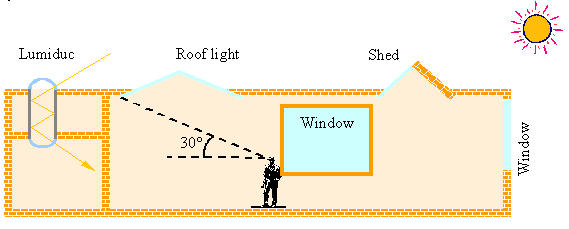 |
| Home |
HOPE: Health Optimisation Protocol for Energy-efficient Buildings |
|||||||||
|
|||||||||
| Guidelines | |
| Introduction Overall design Layout of occupied space Ensuring thermal comfort Good air quality Protection against noiseProtection against noise Energy and well-being Download Guidelines | |
Lighting General
Light is necessary for human activities and well-being. It not only allows vision but controls the internal biological clock as well as several essential body functions. To ensure a good vision, the illuminance level on each task should be adapted to it. Further, the colours should be rendered correctly and in a way that makes people look attractive and healthy. Finally, the luminance ratio compared to the central field should not exceed 3 in the ergorama and 10 in the panorama. Promote dayligting
Our eyes are used to sunlight for millions of years, and adapted to it by evolution. Therefore, it is not surprising that we prefer daylight over artificial light. Its spectrum is ideal for biological stimulation and it is delivered for free. In addition, the sun is the light source that has the smallest heat load per lux (1 W for 100 lux). Therefore, daylight should be used wherever and as far into the room as possible. Daylight is an issue that is addressed by the architect from the earliest design phase. It is achieved by placing transparent openings at appropriate locations. Noise: Légende de la figure:
Smart energy saving
Energy saving with artificial lighting should be obtained together with improved lighting . Ways are efficient lamps and well-designed luminaries that reflect or diffuse most of the light emitted by the bulb to the place needing light. A well-designed lighting may be more comfortable at 250 lux than a poorly designed at 500 lux. |
